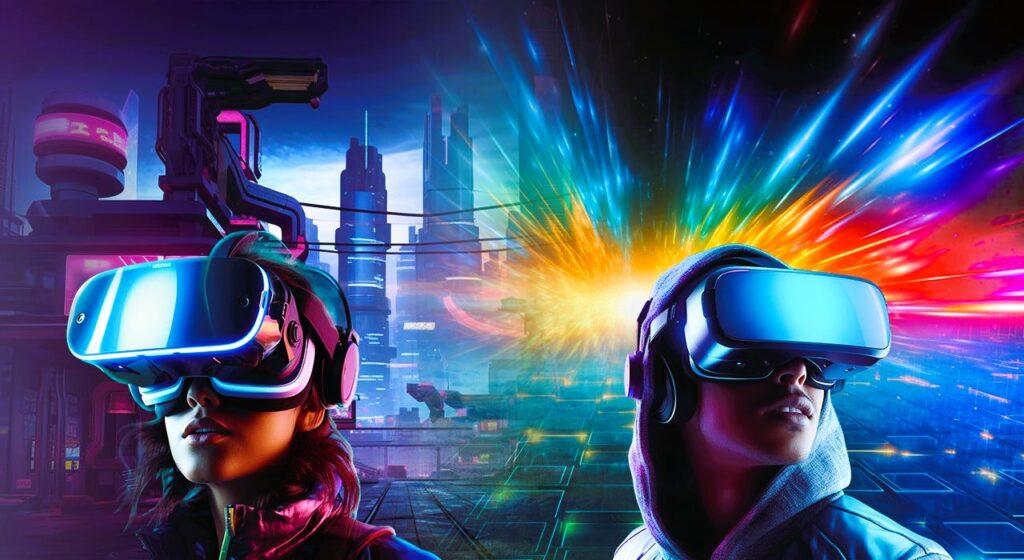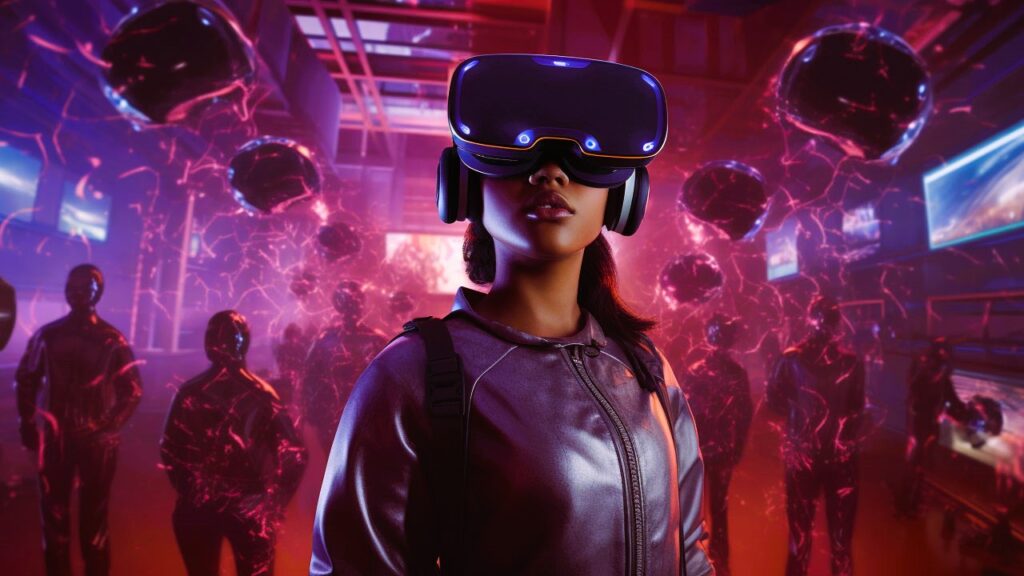Virtual Reality (VR) gaming has emerged as one of the most exciting and innovative advancements in the world of video games. By immersing players in virtual worlds and allowing them to interact with their surroundings in new and exciting ways, VR technology has the potential to revolutionize the gaming industry. In this article, we’ll explore the world of VR gaming, examining the immersive experiences it offers and the challenges it faces as it continues to evolve.
What is Virtual Reality (VR) Gaming?
Virtual Reality (VR) gaming refers to the use of computer technology to create simulated environments that players can interact with using specialized hardware, such as VR headsets and motion controllers. These immersive experiences allow players to feel as though they are physically present in the virtual world, with the ability to look around, move, and interact with objects and characters in real-time.
Immersive Experiences in VR Gaming

One of the most compelling aspects of VR gaming is its ability to transport players to new and fantastical worlds. Whether exploring the depths of the ocean, battling enemies in outer space, or solving puzzles in a mysterious castle, VR gaming offers a level of immersion and realism that is unparalleled in traditional gaming experiences.
In addition to immersive environments, VR gaming also offers unique gameplay mechanics and interactions. From wielding a sword and shield in a fantasy adventure to using hand gestures to cast spells in a magical duel, VR technology allows players to engage with games in new and exciting ways, blurring the line between reality and virtuality.
Challenges in VR Gaming
While VR gaming holds tremendous promise, it also faces several challenges as it continues to evolve. One of the most significant challenges is the high cost of entry. VR hardware, such as headsets and motion controllers, can be expensive, making it inaccessible to many gamers. Additionally, the technology required to power VR experiences, such as powerful gaming PCs or consoles, can also be costly. Did you like the article? We recommend reading about the Psychology of Games.
Another challenge is the issue of motion sickness and discomfort. Some players may experience nausea or dizziness when using VR headsets, particularly during fast-paced or intense gameplay. Developers must carefully design their games to minimize these effects and ensure a comfortable experience for all players.
The Future of VR Gaming
Despite these challenges, the future of VR gaming looks bright. As technology continues to advance and become more affordable, VR hardware is becoming more accessible to a broader audience. Additionally, developers are continually pushing the boundaries of what is possible in VR gaming, creating increasingly immersive and engaging experiences.

With the continued support of both developers and players, VR gaming has the potential to become a mainstream form of entertainment, offering immersive experiences that rival those of traditional media. Whether exploring virtual worlds, battling enemies, or solving puzzles, VR gaming offers a level of immersion and interactivity that is truly unmatched.
Conclusion
In conclusion, VR gaming represents an exciting frontier in the world of video games, offering immersive experiences and unique gameplay mechanics that are unlike anything seen before. While the technology still faces challenges, such as high costs and motion sickness, the future of VR gaming looks promising. With continued innovation and support, VR gaming has the potential to revolutionize the way we play and experience games.
For more information on VR gaming and its challenges, you can visit the IGN website: IGN


